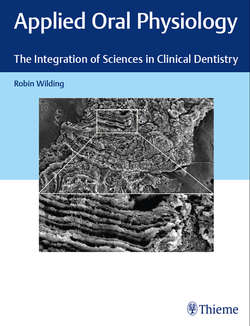Читать книгу Applied Oral Physiology - Robin Wilding - Страница 72
На сайте Литреса книга снята с продажи.
4.3.2 Calculus
ОглавлениеSaliva is saturated with calcium and phosphate ions which may precipitate in an alkaline environment. If the precipitate occurs within plaque, it forms a firm, chalky deposit called calculus (Fig. 4.7). Plaque may become alkaline due to the activity of some oral bacteria which release ammonia during their metabolism of salivary urea. Calculus which is supragingival is generally white and chalky, whereas calculus which is subgingival is darker and harder. The precipitated calcium is either soft brushite (supragingival) or harder whitlockite (subgingival, perhaps from calcium in the crevicular fluid). The submandibular gland saliva has a higher concentration of calcium than other glands and has a relatively high pH. This may explain the rapid accumulation of calculus on the lingual surfaces of the lower incisors. Deposits of calculus have been implicated as a cause of gingivitis and periodontitis. Removal of calculus by prophylaxis has long been thought to help prevent periodontal disease although recent evidence challenges this assumption.
